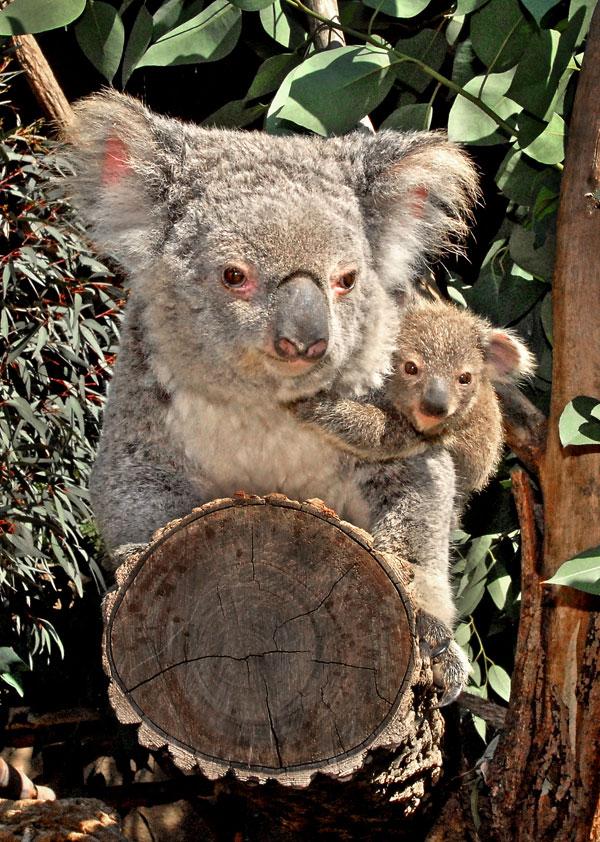L.A. Zoo Has a Baby Boom


The Los Angeles Zoo has its hands full with a bounty of baby animals.
The zoo's baby boom kicked off last year with the July 6 birth of a female koala. Since newborn koalas spend about six months developing in the mother's pouch, this joey has just recently begun to emerge.
Baby koalas are commonly referred to as joeys. When a koala is born, it is just three-fourths of an inch long. After birth they climb into the mother's pouch and stay there for six months. For the following six months, they are weaned from milk to eucalyptus as they stick their heads out of the pouch to eat partially digested leaves. After a year, they leave the pouch for good.
Although they are often referred to as a "koala bear," koalas belong to the marsupial family. Marsupials are mammals whose females typically rear their young in a pouch through early infancy. Other members of the marsupial family are kangaroos, wallabies, wallaroos, wombats and opossums.
Native to Australia, koalas have a very low metabolic rate requiring them to conserve energy and to sleep between 18 and 20 hours a day. They spend about three of their five active hours eating a diet that consists entirely of eucalyptus leaves. Koalas consume 2.5 pounds of leaves per day and rarely drink water due to the moisture found in eucalyptus leaves.
The koala joey isn't the only baby eliciting "awww's" at the zoo.
On March 1, two Peninsular pronghorn, one male and one female, were born. Native to Baja California Sur, Mexico, these graceful animals are mostly active at dawn and dusk. Hunting, cattle ranching and agriculture have resulted in the significant decrease of this critically endangered species.
Get the world’s most fascinating discoveries delivered straight to your inbox.
Newborn pronghorns take their first steps within 30 minutes of birth. By the time they are four days old, they can outrun humans. After just a week, fawns can run faster than dogs and horseback riders over short distances. They are the second fastest land mammal and the fastest ungulate (hoofed mammal), clocking in at anywhere from 40 to 60 mph. They can maintain this speed, without showing any sign of distress, for an hour or longer.
Typically, a pronghorn mother will have one or two fawns weighing in at around 7 or 8 pounds. When they reach adulthood, pronghorns weigh up to 125 pounds and reach a height of 35 inches. The females are usually 10 to 25 percent smaller then males.
March 20, brought the birth of a female desert bighorn sheep. This species is native to the high mountains and deserts of the south western United States and northern Mexico. Preferring to reside in places with rocky terrain and access to water, they completely avoid forested areas. Bighorn sheep can be seen in our local San Gabriel Mountains, though their population is threatened by many factors including drought, predators, disease and fires.
The most recognizable characteristic of the bighorn sheep is the male's massive, spiraled horns and their majestic faces. These horns may add up to one third of their total body weight when they're full grown. Females have much smaller horns.



